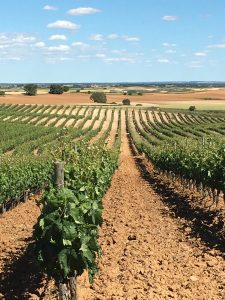Tempranillo – Rioja or Ribera del Duero, which do I choose?
By Jason Moore
Tempranillo, has been known as the backbone of Spain’s most noble wine region, Rioja, for many generations. Often blended with local grapes Garnacha (Grenache) and Mazuela (Carignan), Rioja reds have been Spain’s signature wine for almost two hundred years. But since the turn of the last century, wine-lovers have also come to know Tempranillo as the premiere grape of another great Spanish wine region – Ribera del Duero.
Countless sommeliers and wine retailers have come to appreciate the different faces of Tempranillo and the nuances that are expressed when it is grown in different areas of Spain.
Consequently, there’s been an increase in overall selections from the more recently developed regions like Ribera del Duero. Although grapes have been grown and wine has been produced in Ribera del Duero for centuries, international recognition was late in coming. Not until the 1990’s did Ribera begin to emerge from big brother Rioja’s long established shadow.
Ribera’s emergence as a rival (or at least an alternative) to Rioja begs the questions:
“Which Tempranillo should I drink and why? Are Tempranillo wines from Rioja different from those from Ribera del Duero wines, or do they taste more or less the same? What are the differences? How about the similarities? Which wine goes better with what I am eating tonight? And what if I am not eating? Which wine is better as a cocktail?”





